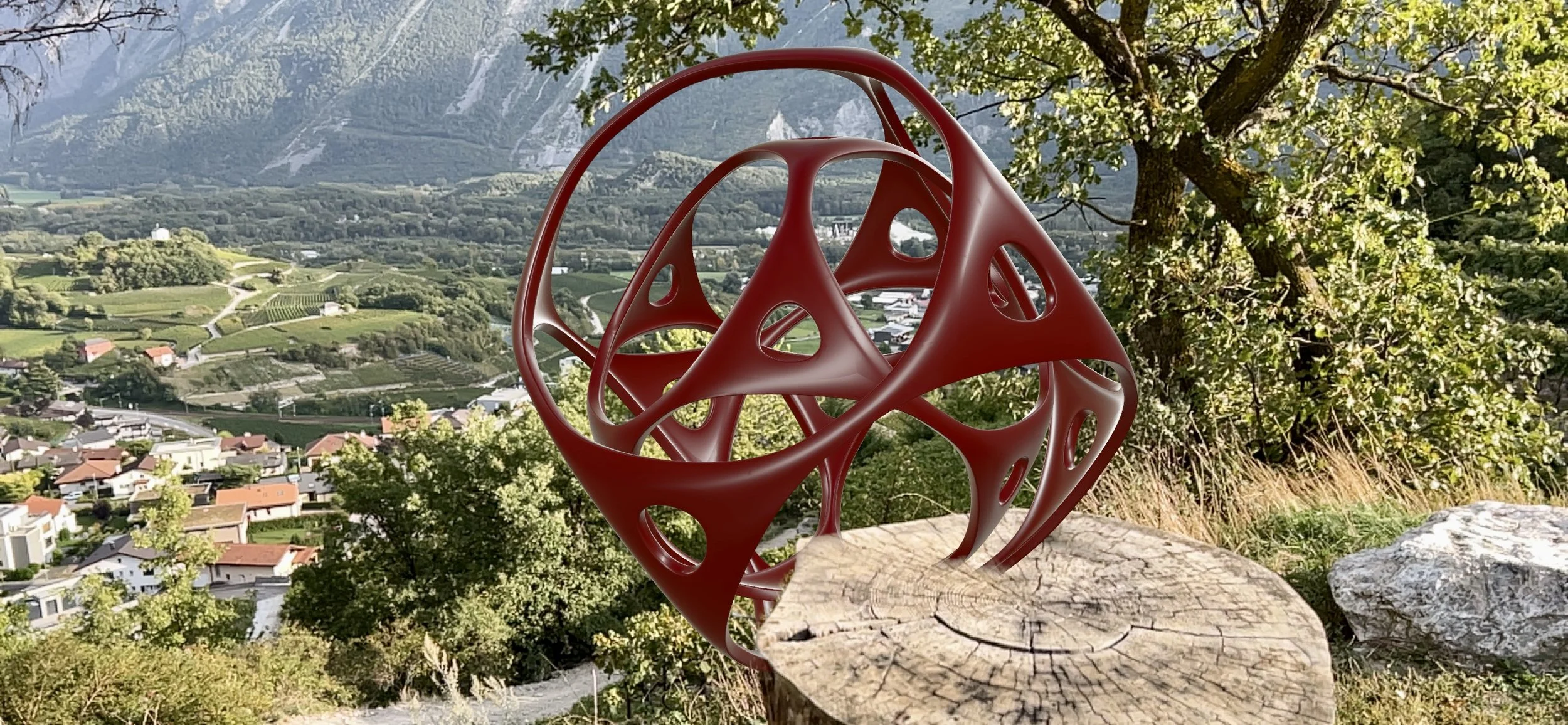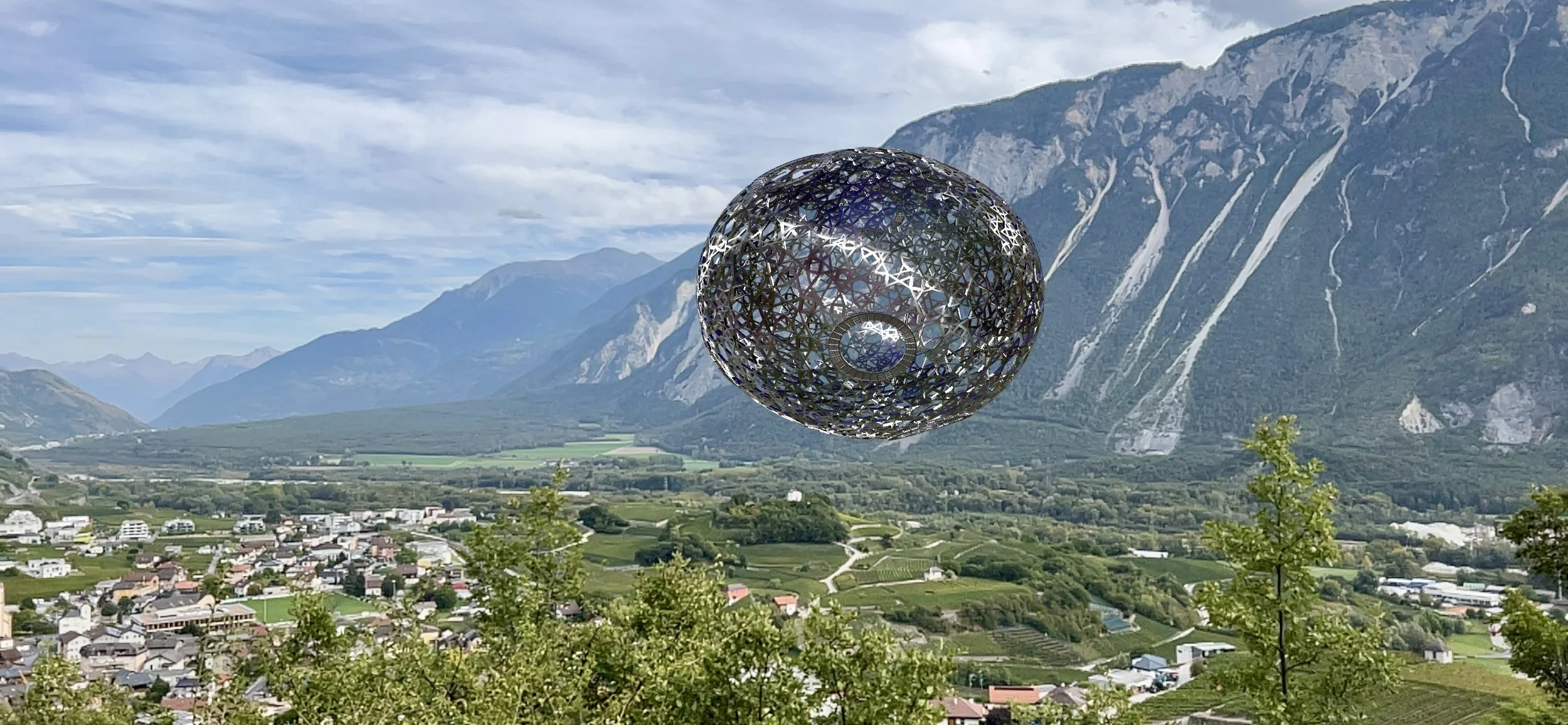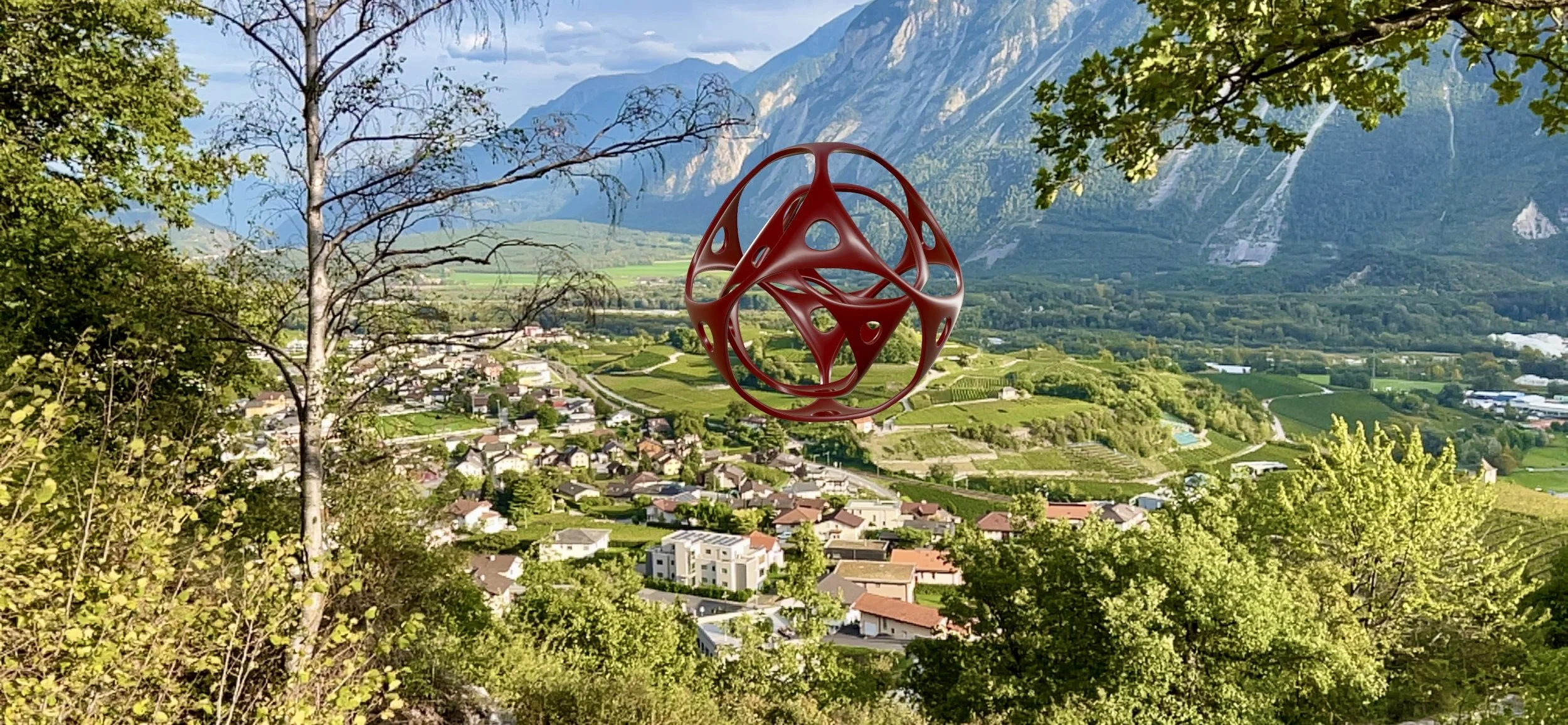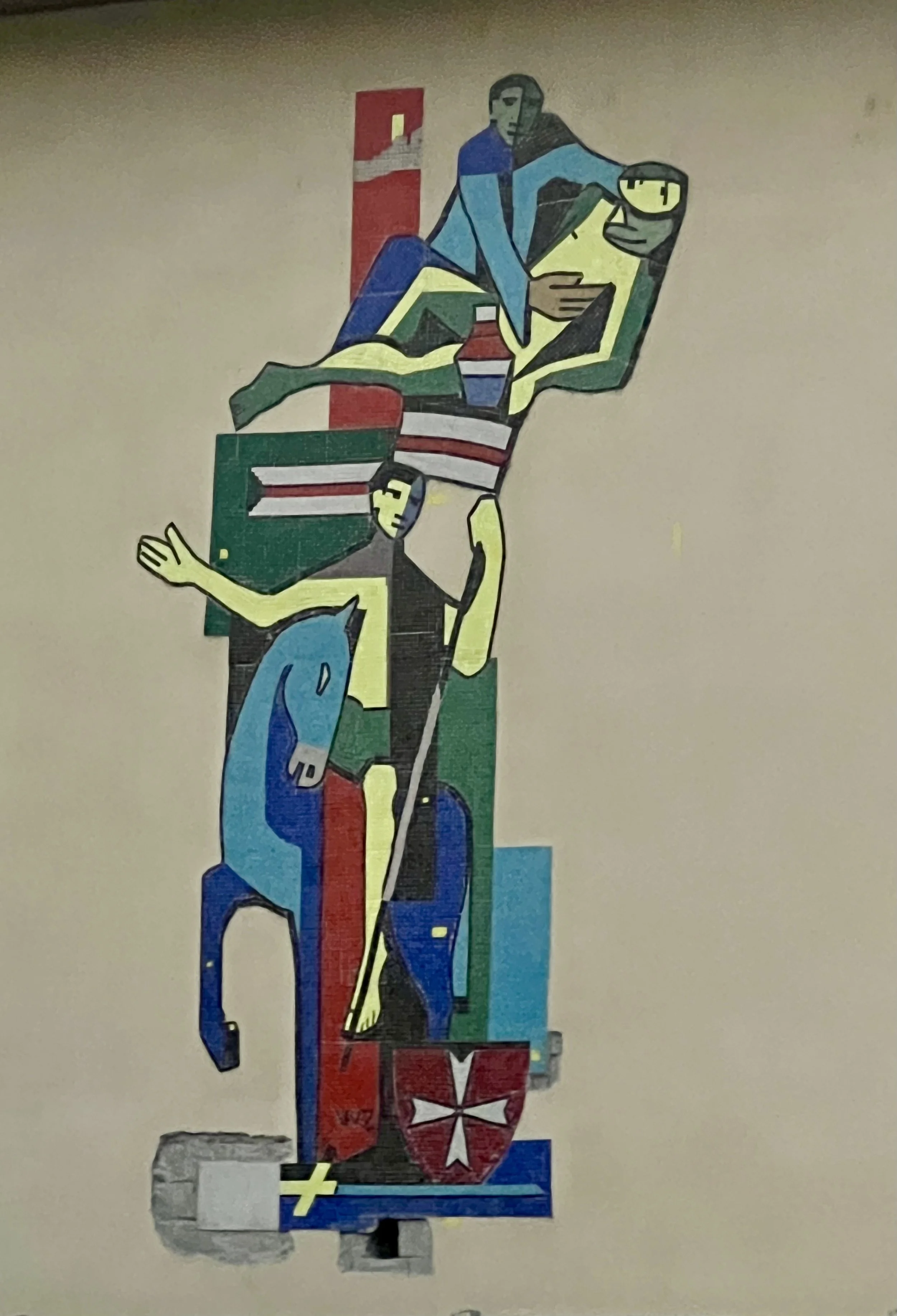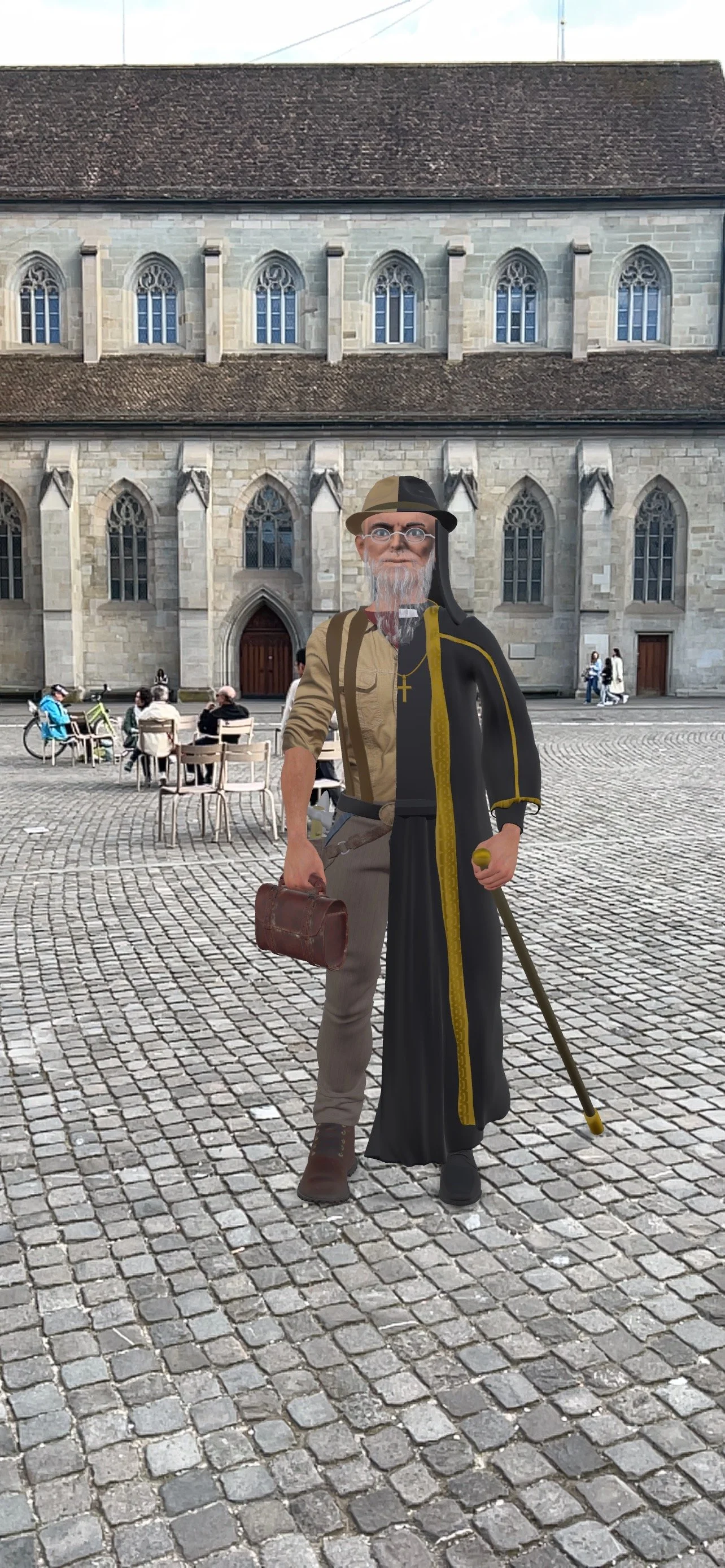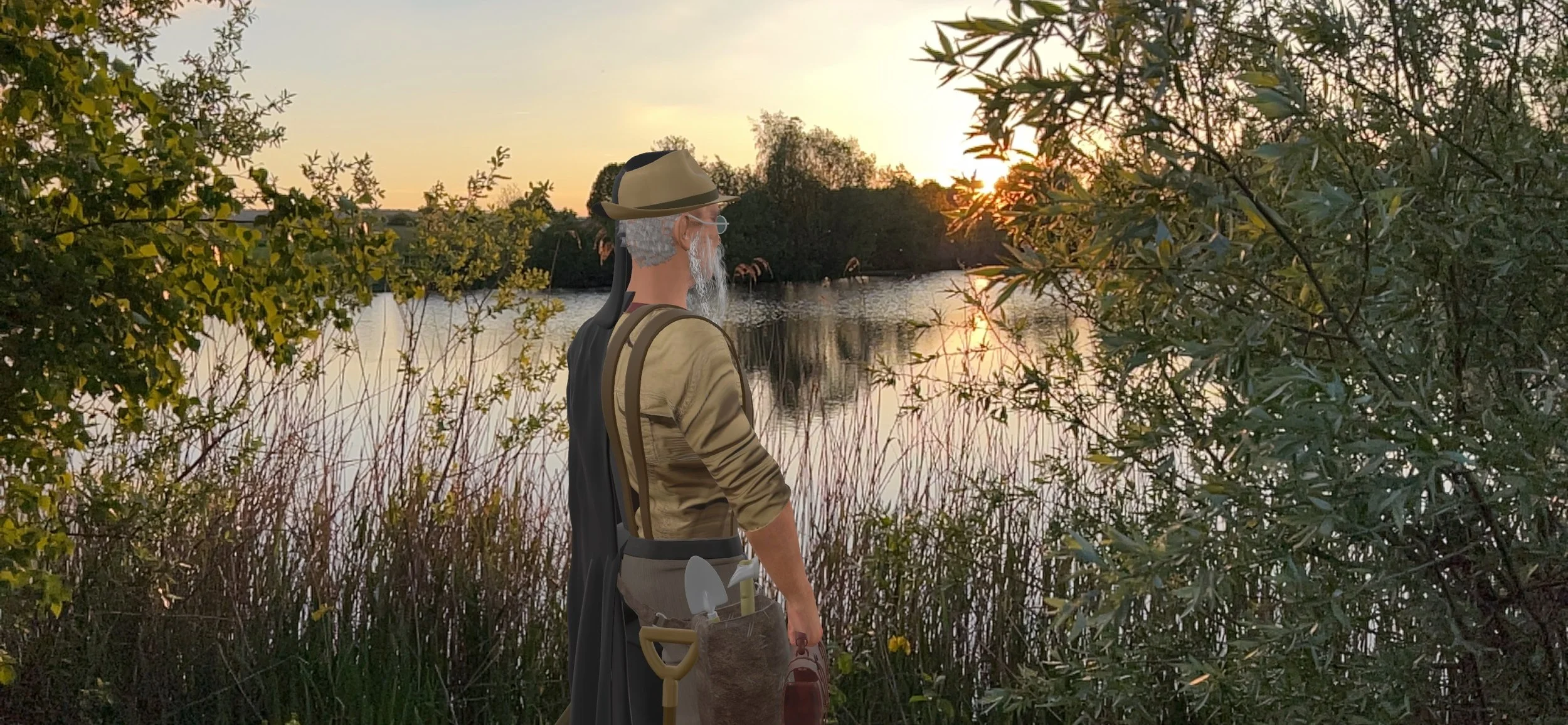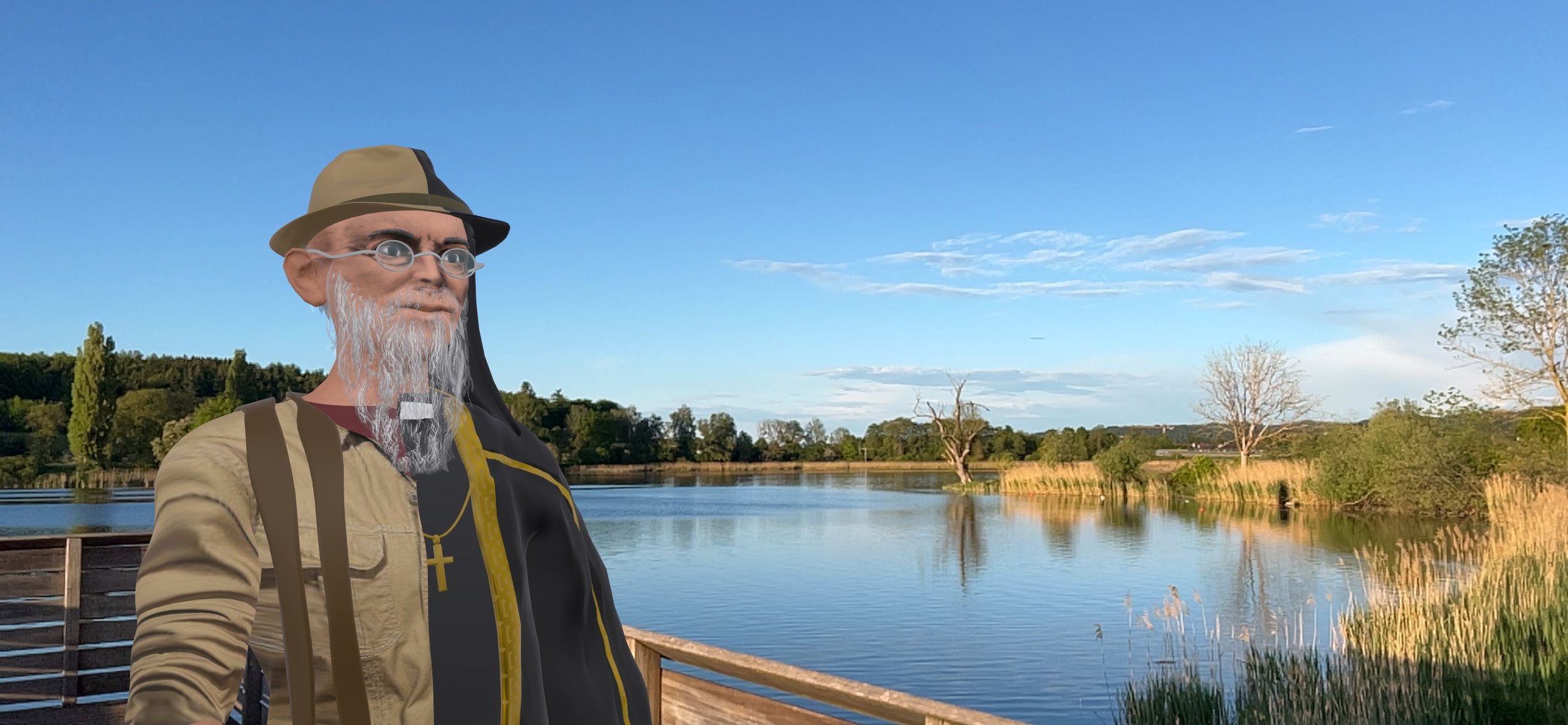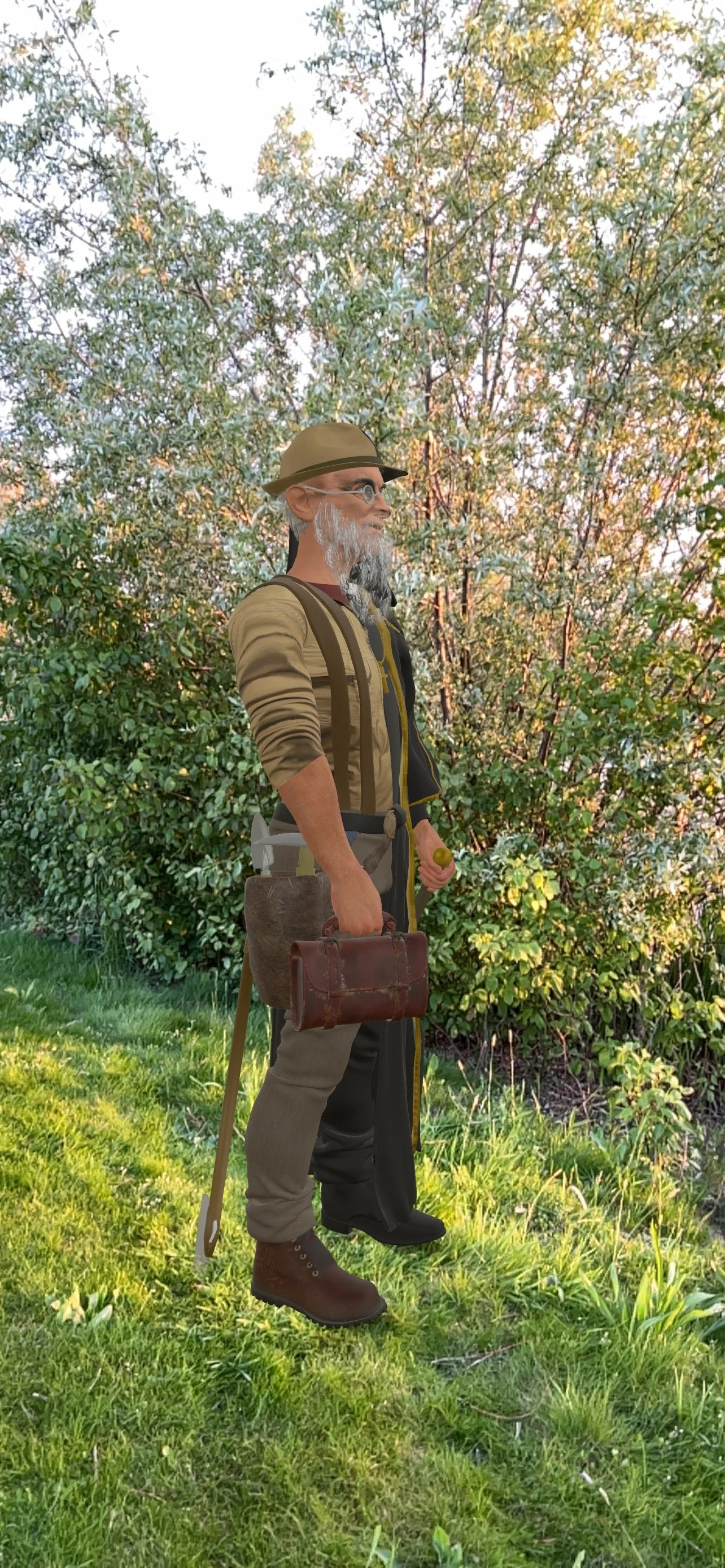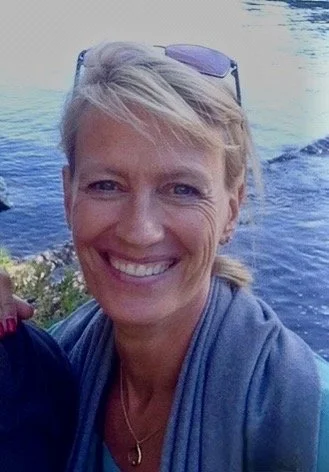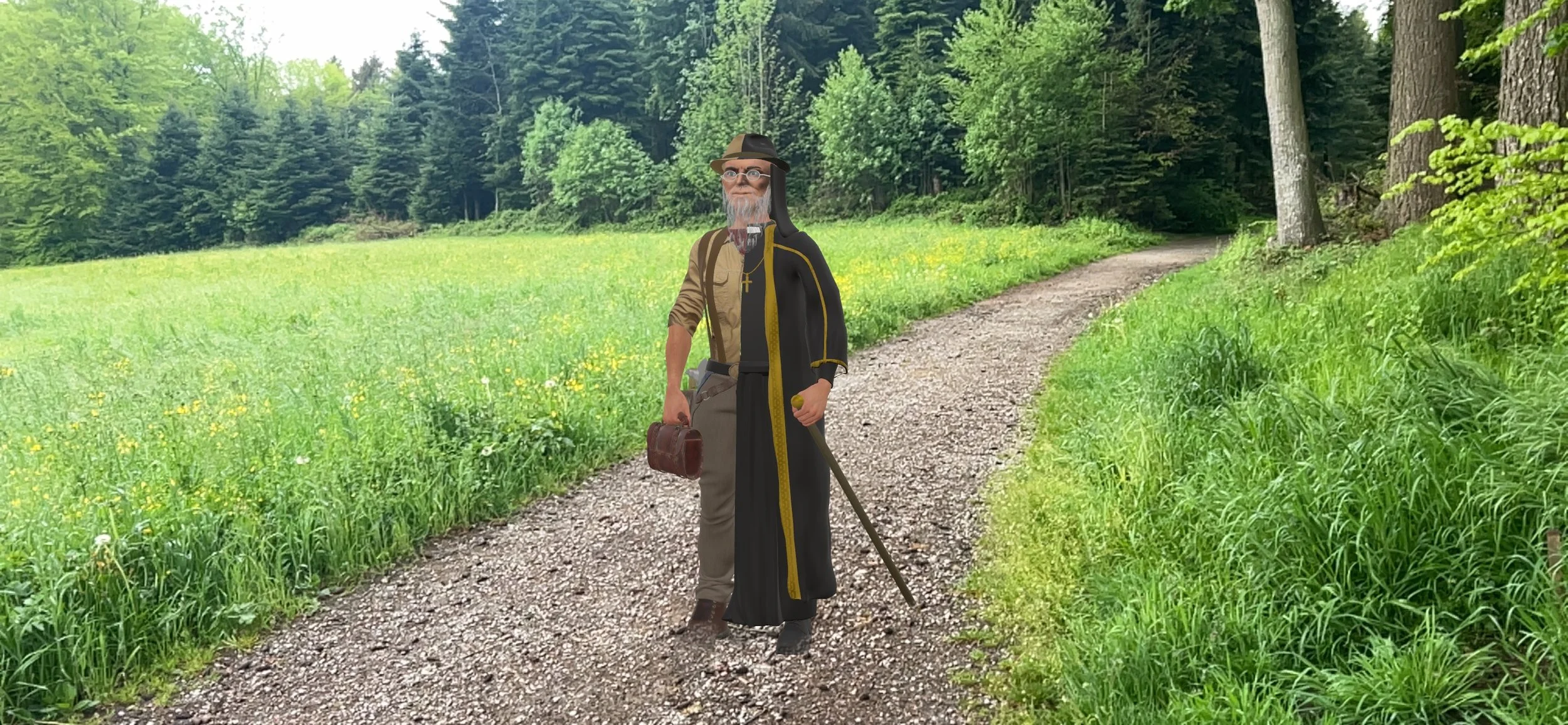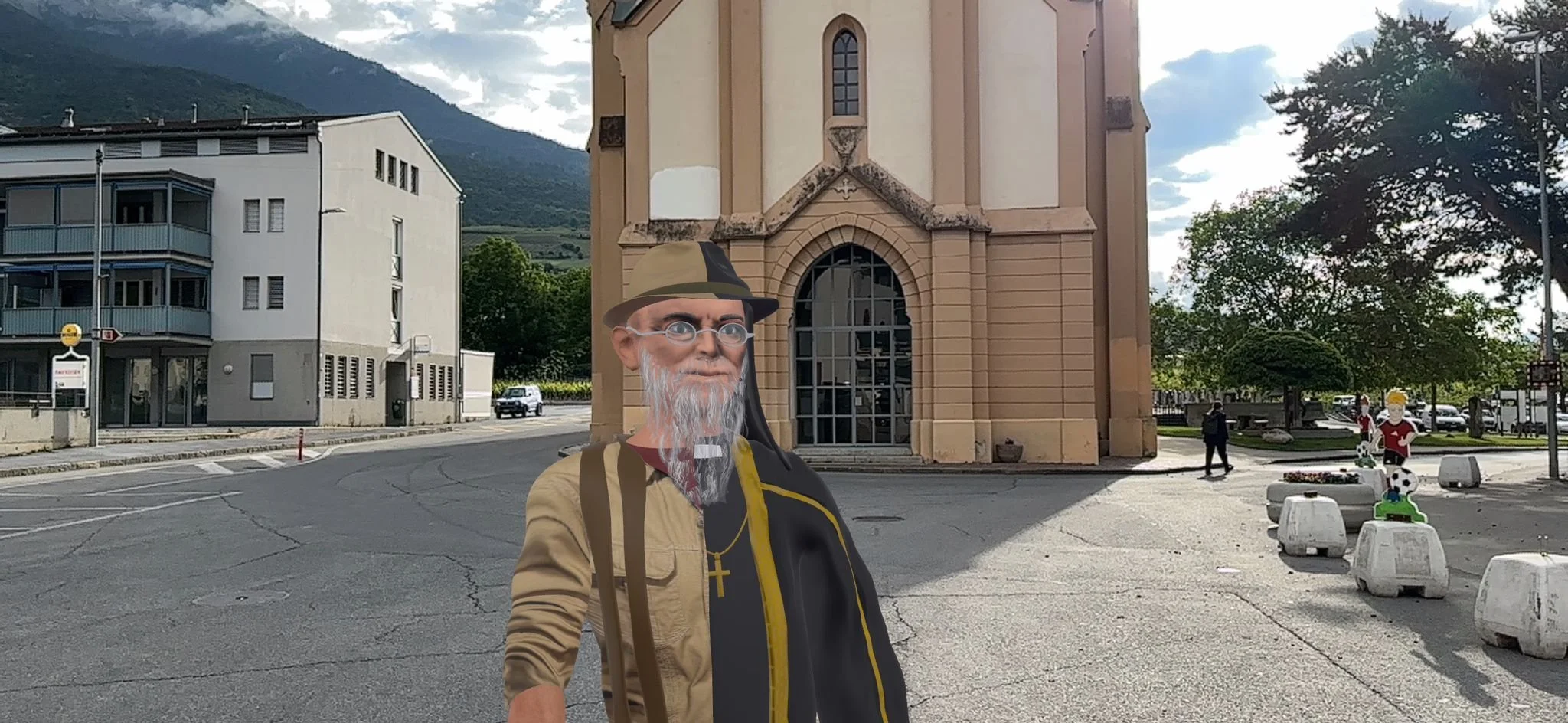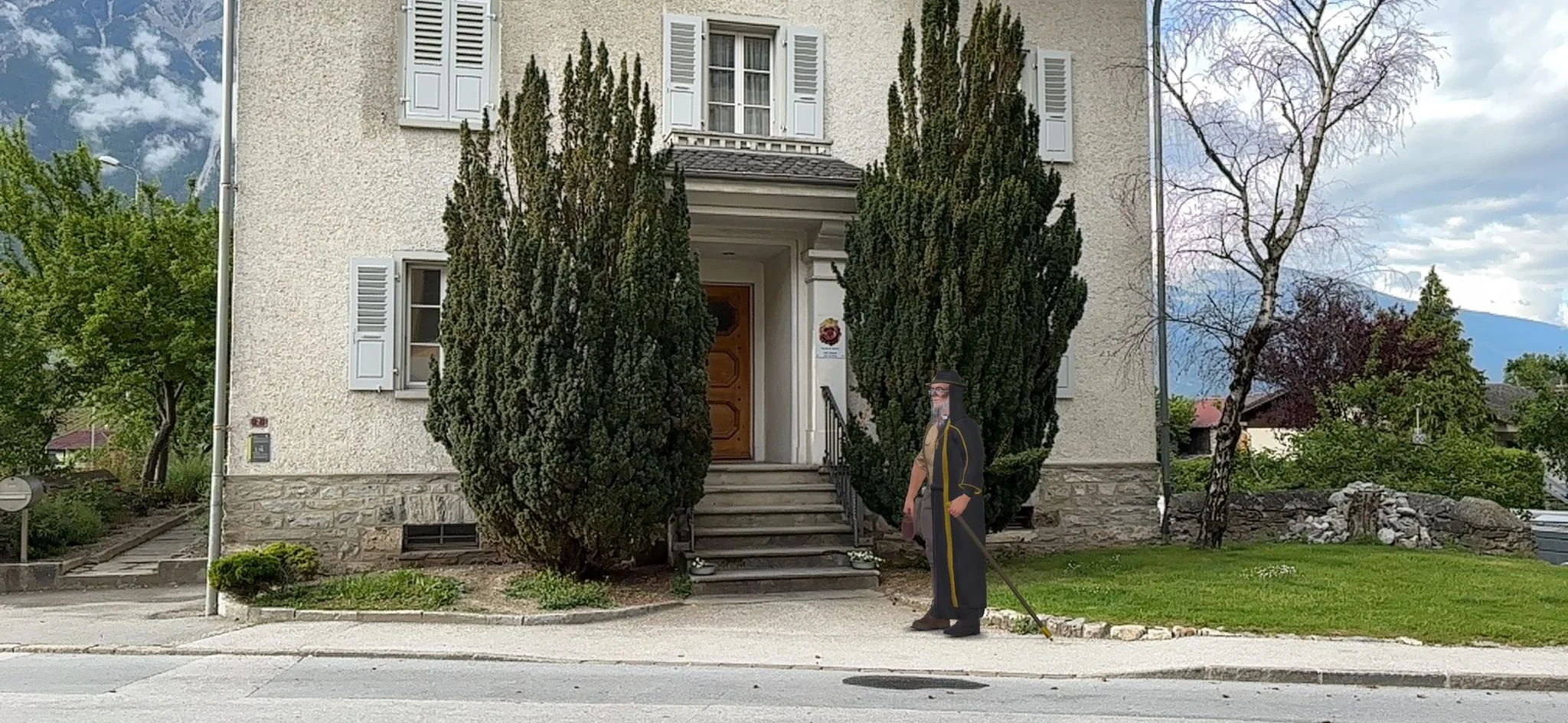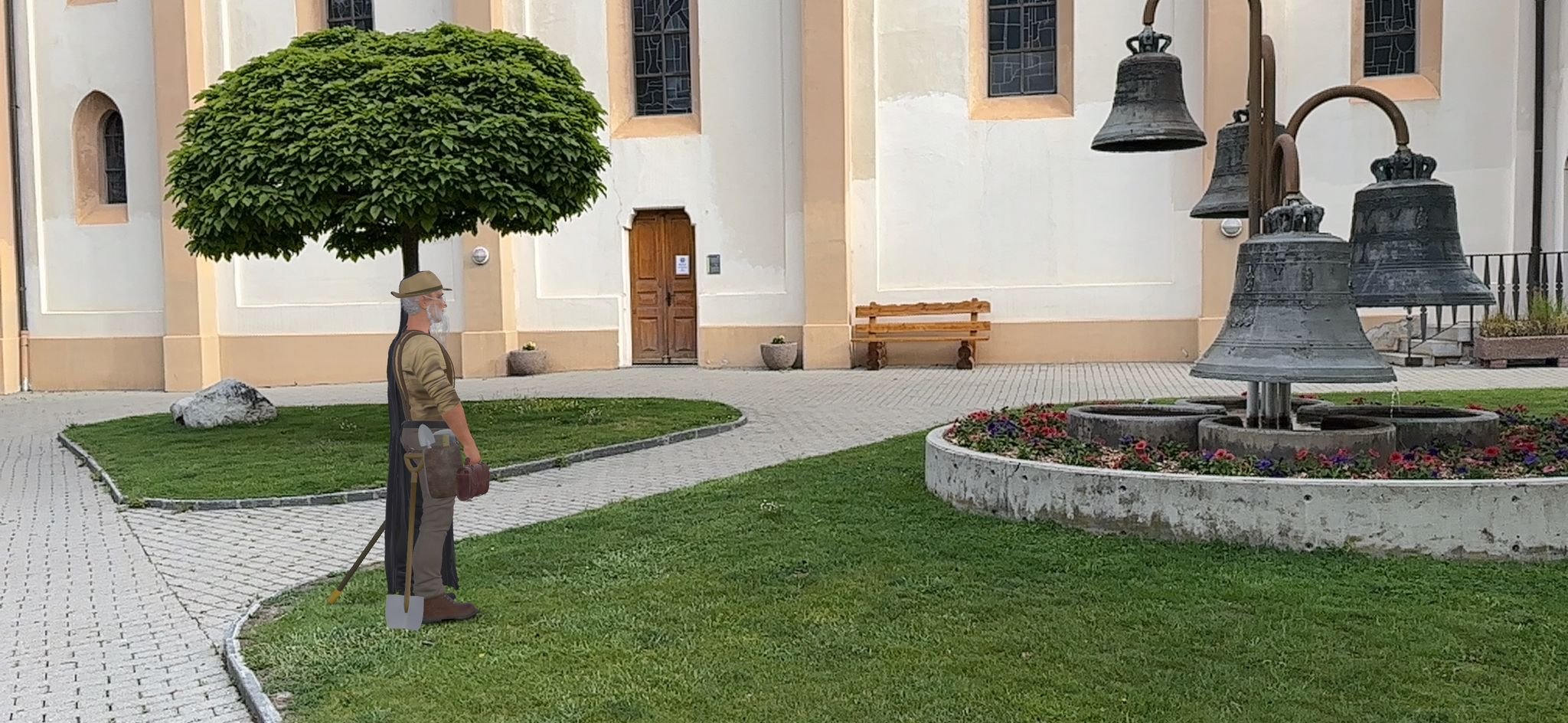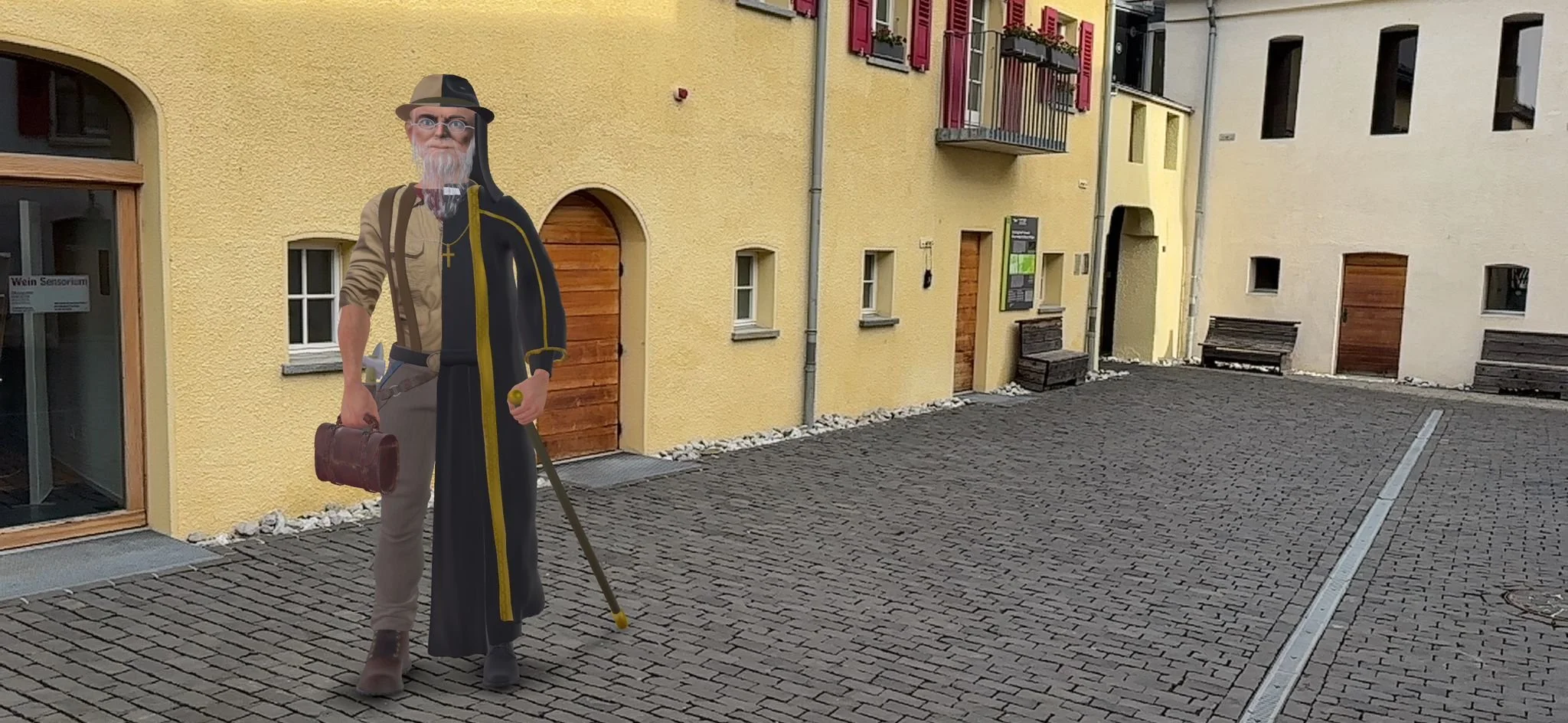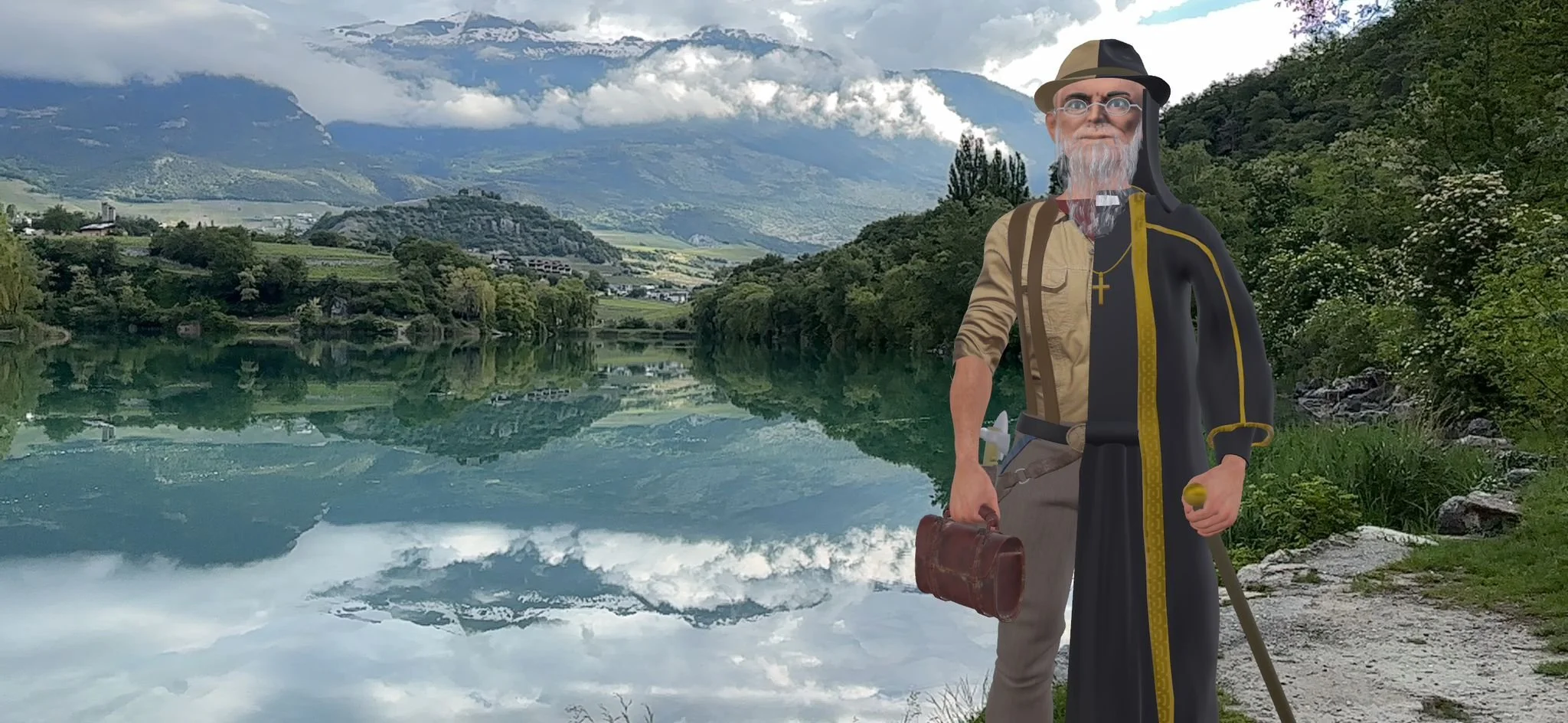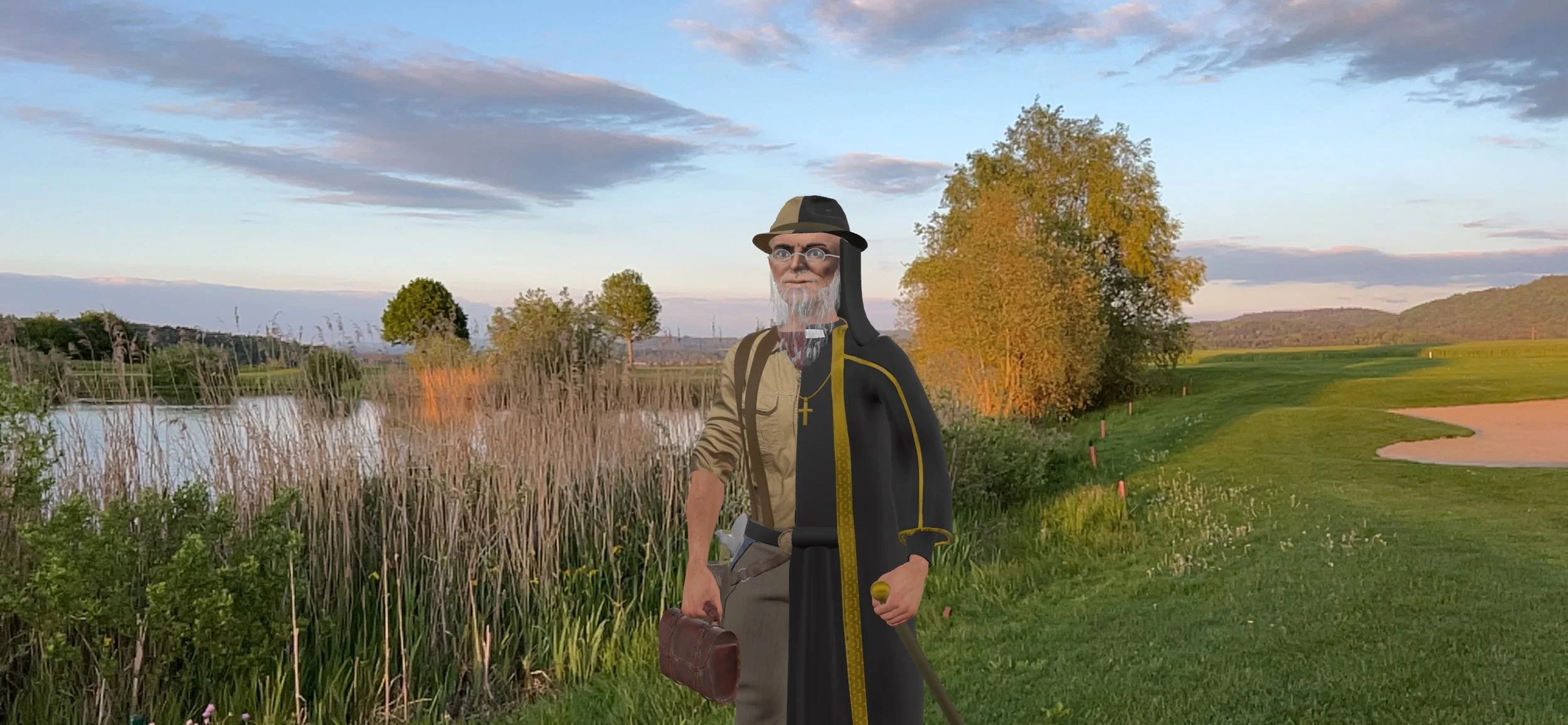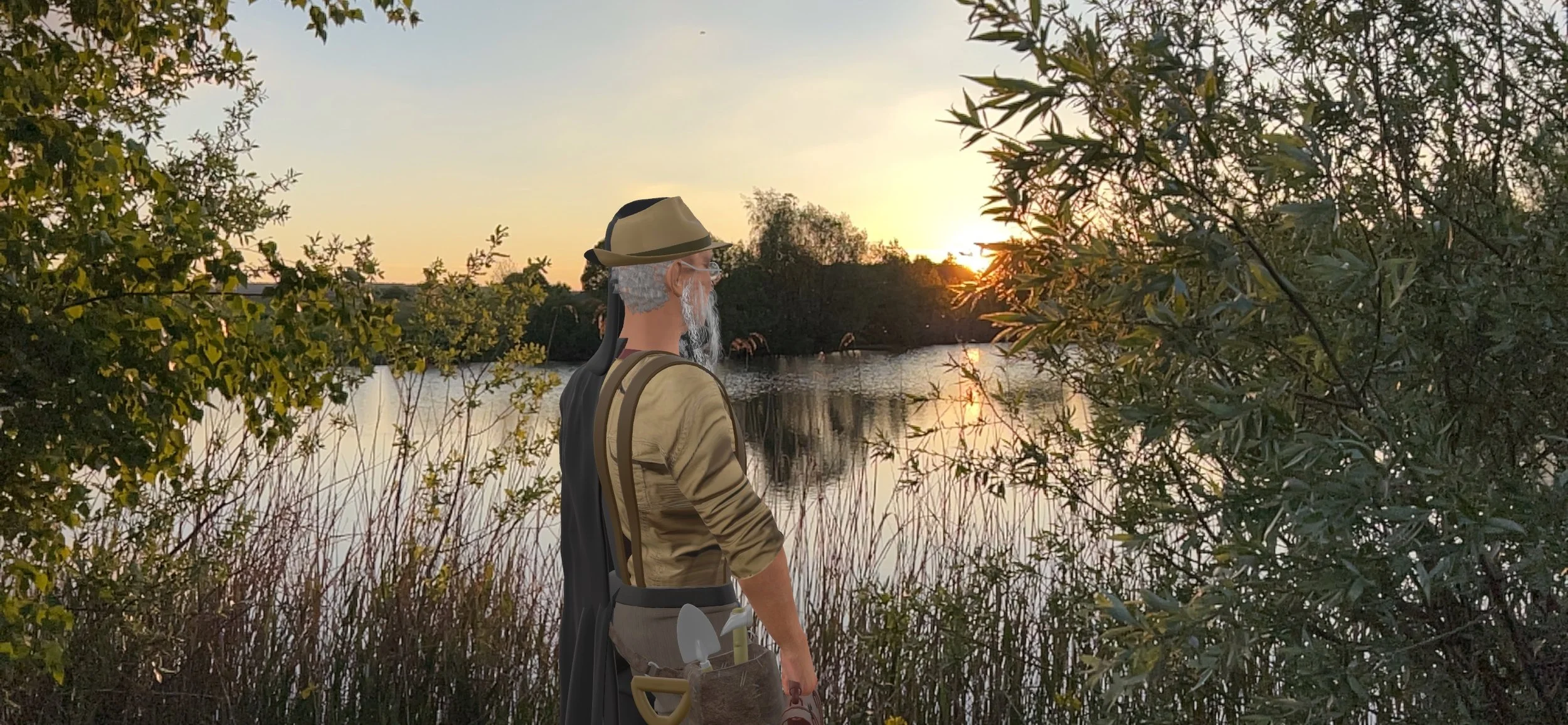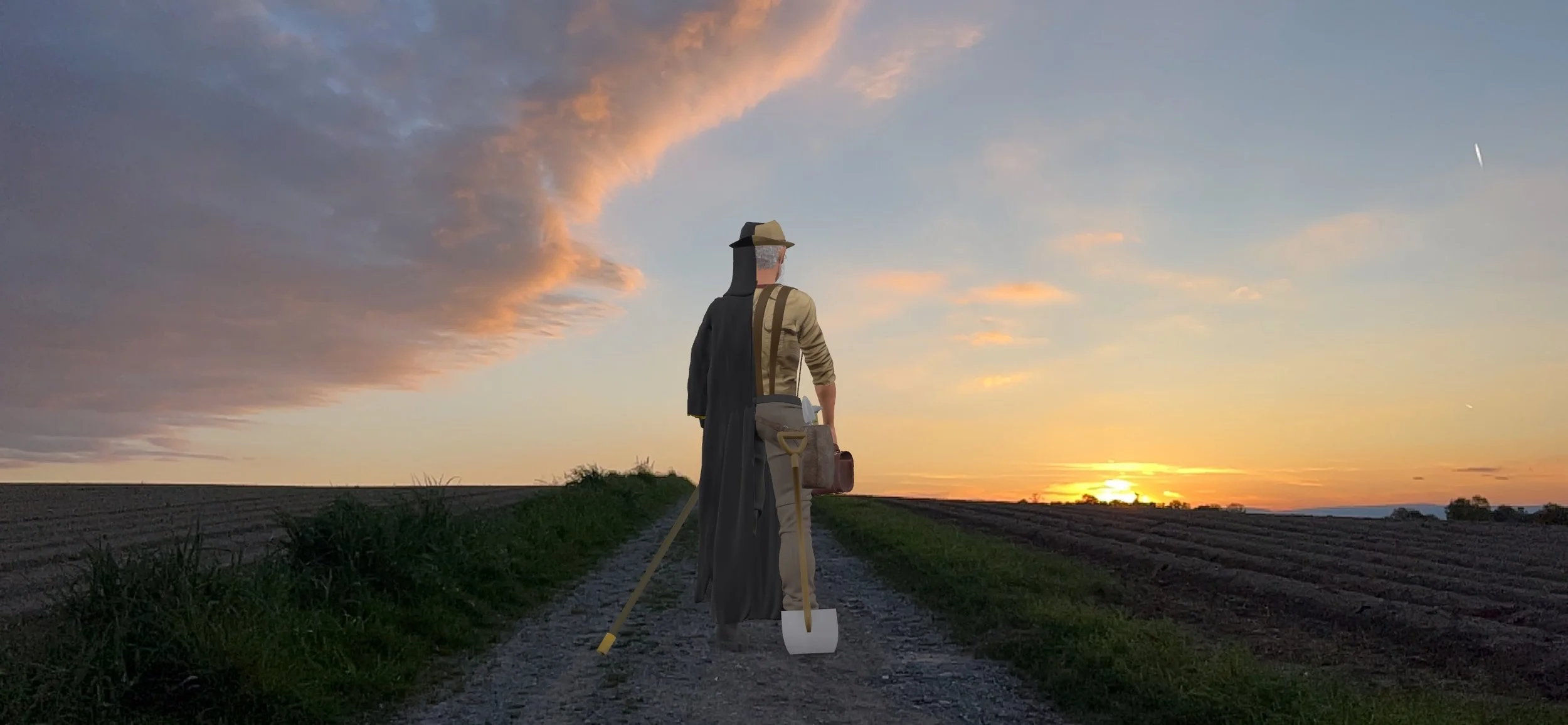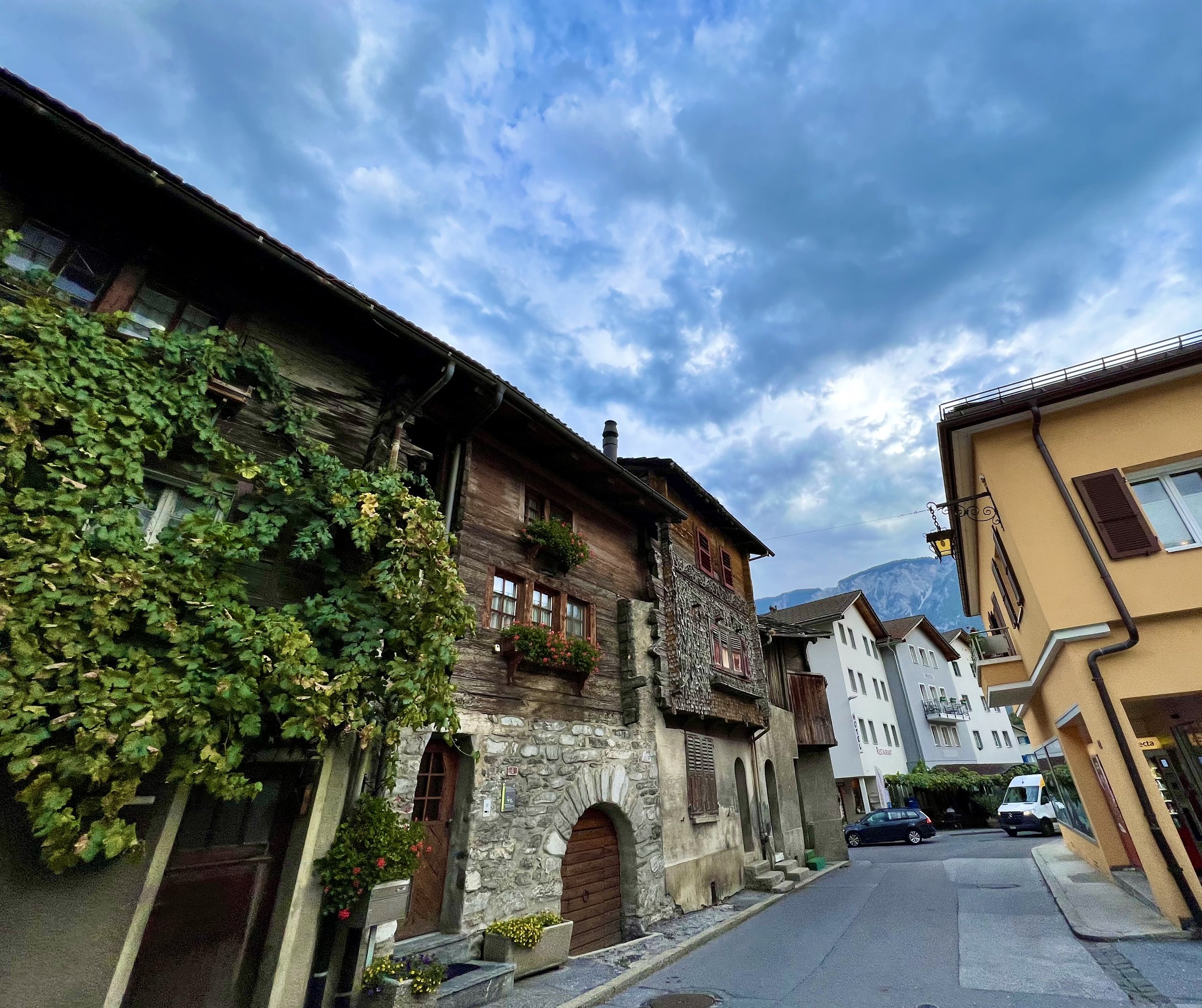
Unique in Switzerland: Discover the new Art and Culture Path in the idyllic village of Salgesch.
The new Art and Culture Path awaits you with virtual images depicting the history of Salgesch, as well as sculptures and artworks in the serene natural surroundings.

Digital Sculpture Meets Wine Culture: The Art and Culture Path in Salgesch
Experience History Interactively
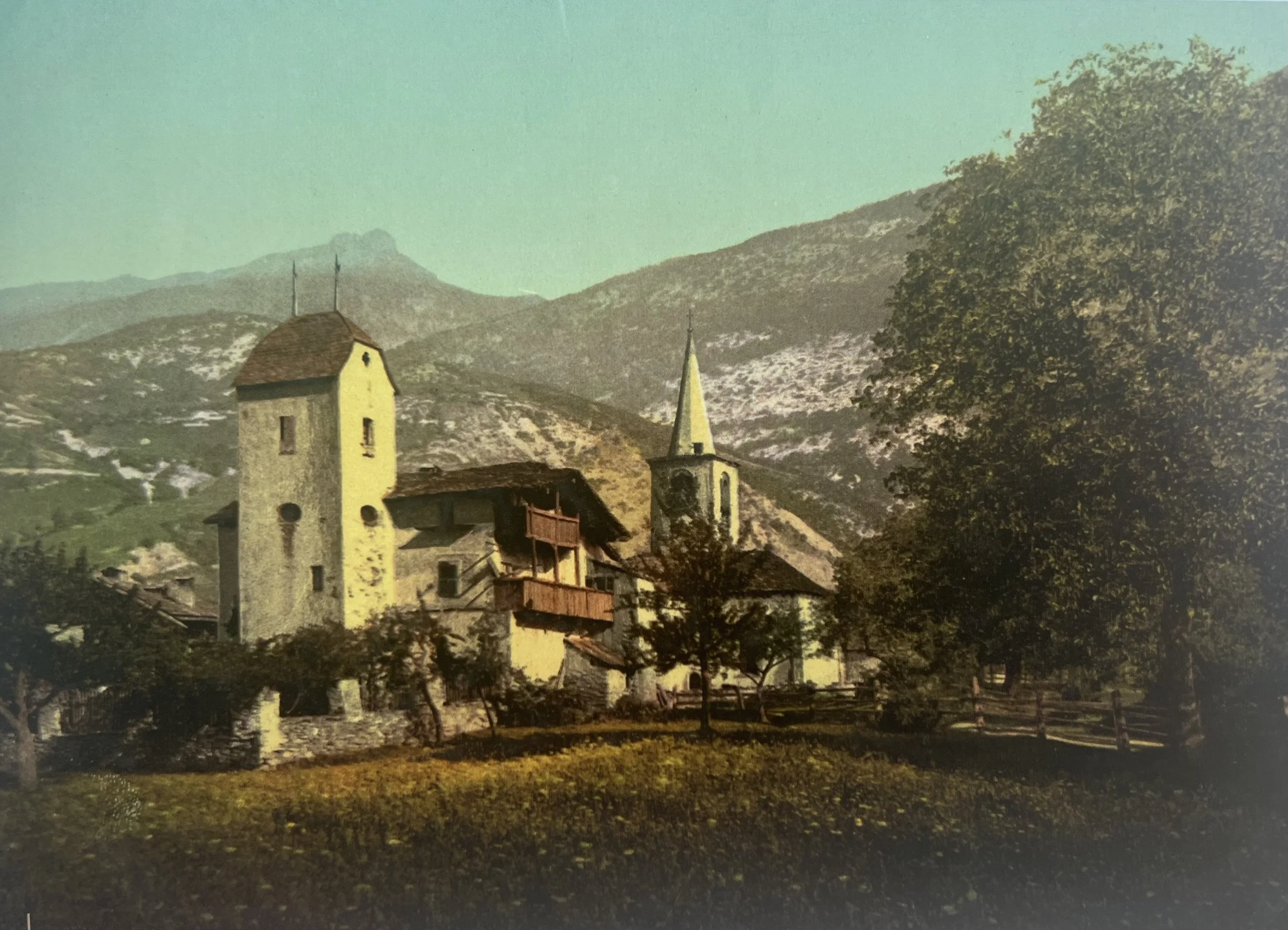
Colorized photo from around 1880 featuring Salgesch with the rectory and the old church with its 1607 tower.
The virtual path opens up a new perspective on the village's history: What did the village streets look like in the past? What was the courtyard like here? Who used to play music in this spot?
GRAND OPENING 2024
Virtual Art and Culture Path in the Wine Village of Salgesch
The idyllic wine village of Salgesch presents its new Art and Culture Path, offering a unique experience in the world of Augmented Reality (AR) for both young and old. Prominent local figures, such as the storyteller Monika Cina and archaeologist and Jesuit priest Gottfried Zumoffen, have been honored with avatar monuments. By scanning a QR code found on the village streets, visitors can access photos showing what those streets looked like in the past. At certain points, the original historical images are displayed, while at other locations, photos have been delicately colorized and animated, bringing them back to life. Historical objects, such as the impressive grape press housed in the wine museum, have been recreated as 3D objects and placed in a wild, unprocessed vineyard plot, bearing witness to the changes in viticulture. Along the path, in addition to contemporary sculptures, you'll also find art pieces by the painter Oskar Rütsche, who had his studio in Salgesch. The well-known historical mosaic by Werner Zurbriggen from Saas-Fee on the old schoolhouse has been digitally recreated and animated, offering a new form of preserving the village's history.
Exploration in Augmented Reality
This innovative path is designed for augmented reality viewing, allowing visitors to use their smartphones to interact with the exhibits. Some 3D objects are intricately designed and can be integrated into educational activities, while others invite play and exploration. With a simple scan of the QR code at the starting point of the trail, visitors can explore the virtual path, not only capturing photos and videos of the exhibition objects but also "taking them with them" by saving them on their devices. All objects are geolocated with GEO-AR in Salgesch, meaning visitors must come to Salgesch to view the exhibition.
A Playful Experience for All
The virtual path in Salgesch is an exciting and accessible art and culture project for people of all ages. Visitors only need a smartphone to participate.
With this project, Salgesch has established itself as a pioneer in the Swiss art and culture scene. The municipality is the first in Switzerland to present an exclusively virtual art and culture trail – an innovative and contemporary way to enjoy cultural experiences. This not only helps bridge the digital divide between generations, as younger individuals introduce older generations to the technology, but also generates excitement and curiosity, possibly because many are experiencing augmented reality on their smartphones for the first time.
Visit Salgesch and Experience Art and Culture Anew
We warmly invite you to explore the new virtual Art and Culture Path in Salgesch and be inspired by the innovative installations. Whether you're an art enthusiast, history buff, or novice, young or old, this project promises an entertaining and enriching experience for all.
We look forward to your visit in the wine village of Salgesch!
Sculptures in Augmented Reality in Salgesch
Monuments and Commemorative Culture in Salgesch
Johann Joseph Gottfried Caesar Zumoffen SJ (* October 2, 1845, in Salgesch; † September 1, 1928, in Beirut) was a Swiss Jesuit and archaeologist. He gained recognition for his geological, paleontological, and archaeological fieldwork (Géologie du Liban, 1926) and is considered the pioneer in the study of the Stone Age in Lebanon, particularly the pre-Phoenician Yabrudian culture group (100,000 B.C.). He produced the first geological map of Lebanon and authored a book on its prehistory, La Phénicie avant les phéniciens: l'âge de la pierre. When the two English archaeologists Dorothy Annie Elizabeth Garrod and Diana Kirkbride conducted an excavation campaign in Aadloun in February and March 1958, they named the site they were re-investigating in memory of its discoverer, Abri Zumoffen.
Monika Cina (1923-2021) was a local storyteller who preserved her memories in the work "Xeverinus: Turning Times in Valais 1900-1945: Alpine herder, midwife, waitress, and noble guests." It depicts the life of an Alpine herder, constantly shifting between the village and the alp, described in precise and vivid narratives. It contrasts the grand tourism of the emerging era of grand hotels with the life and struggles of a simple waitress. The joys and constraints of village life in the first half of the last century, global economic crises, and individual fates are all explored. The trilogy, tentatively titled XEVERINUS, pays homage to the people of that era, whose simple and challenging lives continue to leave traces today. The essence of their legacy: Live and love life as it is. This book masterfully portrays the "good old days," which were sometimes anything but good. It paints beautiful pictures, but also includes robust shadows. True stories indeed, stories that touch the heart.
Oskar Rütsche The artist Oskar Rütsche still works on his creations in the Salgesch studio every day, even at over 90 years old. He has exhibited his works in over 100 cities worldwide. Rütsche's works are familiar to a large portion of the Swiss population, whether consciously or unconsciously. Numerous Nestlé product brochures, including Cailler, feature his work. His works also adorn the premises of many Raiffeisen branches.
Werner Zurbriggen from Saas-Fee, the artist who created the mosaic on the old schoolhouse (see below). In addition to his drawings, he created monumental artworks on numerous buildings in the Saas Valley and other communities in the canton of Valais. Well-known works include murals for the Saas-Balen church, mosaics for the Saas Fee church and the Gondo parish in the Zwischbergen community, as well as stained glass windows in Riddes (1972) and Salgesch. In his works, he combined figurative elements, often featuring the image of a Valaisian woman in traditional dress, with abstract forms influenced by Classical Modernism, and sometimes purely geometric motifs.
From Salgesch to Beirut: The Life and Legacy of Gottfried Zumoffen
Gottfried Zumoffen, born in Salgesch as the son of Joseph Zumofen, the procurator, and Anna Maria, née Cina, had a remarkable educational and professional career. It is not known why his birth name Zumofen was given a second “f”. Fact is that he himself signed his writings with Zumoffen, the second F could be interpreted today as F for formative, fervent, foundational, fascinating and faithful. (German; formend, führend, fundierend, faszinierend). In any case, he had a remarkable educational and professional career.
His educational journey began in the primary school in Salgesch, followed by studies at the teacher's seminar in Sion, after which he worked as a primary school teacher also in Salgesch. However, financial circumstances forced him to drop out of his later studies at the college in Brig.
A Journey Through Cultures and Sciences
In 1871, Gottfried joined the Jesuit Order in France and continued his academic training. He attended a gymnasium again and studied philosophy. His path then led him to North Wales, where he studied theology and was ordained a priest. He subsequently worked as a priest in southern England and later took on the role of prefect of a Jesuit college in France, where he also served as a librarian and French teacher.
Paths of Discovery: The Life of Gottfried Zumoffen, Explorer of History and Science
His journey continued in the Ottoman Empire, where he learned Turkish and Arabic and took up a position as prefect and lecturer in physics, chemistry, and natural history at the university in Beirut. With the outbreak of World War I, all Jesuits had to leave Lebanon, and Gottfried moved on to Cairo, where he taught chemistry and physics. Eventually, he returned to Switzerland and worked at the University of Bern.
Crossing Borders: Gottfried Zumoffen and the Origins of Lebanese Archaeology
In addition to his teaching, Gottfried was a passionate researcher. He wrote books and significantly contributed to the discovery and exploration of archaeological sites in Lebanon. He is regarded as the founder of the study of the Stone Age in that region and created the first geological map of Lebanon. In his honor, an important archaeological site is named Abri Zumoffen.
Places and travels: Salgesch, Sion, Brig, France, North Wales, southern England, the Ottoman Empire, Beirut, Cairo, Bern.
Languages: German (native), English, French, Turkish, Arabic.
Professions and activities: Primary school teacher, Jesuit priest, prefect, librarian, French teacher, lecturer in physics, chemistry, and natural history, university teacher, researcher, and author.
Gottfried Zumoffen's Legacy: Inspiring Curiosity From Past to Present
“It's incredible how many professions he learned. What a great biography. And how mobile Gottfried was. Imagine, during that era, travel was not as comfortable as it is today. People spent a long-time journeying to reach these places. Gottfried was truly a global citizen. Thanks to the latest technology, we are bringing him back to life. With the use of a QR code, he can now come to us, and we believe that as a researcher, he would have been utterly fascinated by this. He joins us with his biography, which is extraordinary not only for his time but also for ours. May we be inspired by his curiosity, his spirit of research, and his thirst for knowledge.” Sarah Montani.
A Project from the Johanniterbund
Copyright Johanniterbund Salgesch Valais
Manfred Mathier, Ursi Dupont-Cina, Harald Glenz, Gilles Florey, Sylvie Cina, Sandrine Fussen-Rion, Artist Sarah Montani
Since the Johanniterbund settled in the village in 1235 and established a hostel for pilgrims and travelers, a lot of water has flowed down the Rotten. The war in the Pfynwald in 1798/99 left its mark on our region, as did industrialization at the beginning of the 20th century, recessions and economic upswings. One thing, however, has remained the same since 1235: the hospitality that Salgesch has shown its guests, encouraging many a traveler to linger and even stay.
Since 1987, the Johanniterbund has been responsible for the preservation of Salgesch's cultural and historical heritage.
“This project was a fascinating way of reviving the past in today’s fast-paced world and, in its own way, contributes to a varied deceleration of the moment.
Without the past, we cannot categorize the present. If we know that tomorrow begins today, we will hopefully live more consciously in the here and now.””
“It was an exciting project to study Gottfried Zumoffen’s biography. I was impressed by his mobility and the various facets of his life. I worked on this project with Jamie F.G, who helped me capture the essence of Gottfried. Jamie is a nomadic 3D artist, interested in the spiritual and deeper aspects art has to teach us. Since the virtual world offers us new freedoms, we have given his essence multiple facets. We used the only photo we could find to model his face. We are excited to present Gottfried. In designing the monument, we had many virtual conversations with Gottfried and believe that this monument would have honored him greatly. Thanks to the team at the ‘Johanniterbund’ for the meticulous historical researches and the co-creation, and thanks to Jamie F.G for the valuable inputs and helping me in this zero-gravity art. ”
“Sarah Montani created a monument for Father Gottfried Zumoffen that does not stone and bury the forgotten man from Salgesch, but rather brings him to life. The artist meticulously captures the specific facets of his fascinating personality, depicting a Jesuit priest and archaeologist who was clearly aware in his work that - as Einstein would later phrase it - “science without religion is lame, religion without science is blind.””
Manfred Mathier
Credit: Chantal Mounir-Glenz
Credit: Chantal Mounir-Glenz
Credit: Chantal Mounir-Glenz
Credit: Chantal Mounir-Glenz
Credit: Chantal Mounir-Glenz
Credit: Sarah Montani
Photos and videos may not be used without written permission.






